My sister and I have a fabulous tradition of treating each other to massages on our birthdays. We go together, which means I get to enjoy a massage even on her birthday. It’s self-care that’s easy to get addicted to, and now I’m certain that twice a year is not enough. What better way to enhance a massage than with your own DIY massage oil blends!
Massage has many benefits, including improving circulation, easing tension, and stimulating the body to release toxins. And when massage is combined with aromatherapy, a happy synergy happens. The mind and body benefits of essential oils definitely enhance the benefits of massage.

Jump to:
Here’s a general DIY massage oil recipe to follow, along with 10 essential oil blends and uses. While this post is perfect for a Valentine’s Day treat, there’s no need to wait for a special occasion to give or receive a massage. Share these blends with a partner, or save them all for yourself (decadent scalp massage, anyone?)—I guarantee they’ll come in handy one way or another.
As always, after diluting the essential oils in a carrier oil, be sure to do a patch test on a small section of skin to ensure you do not have an allergic reaction to any of these oils before slathering them on the body or face.
Massage Oil Ingredients
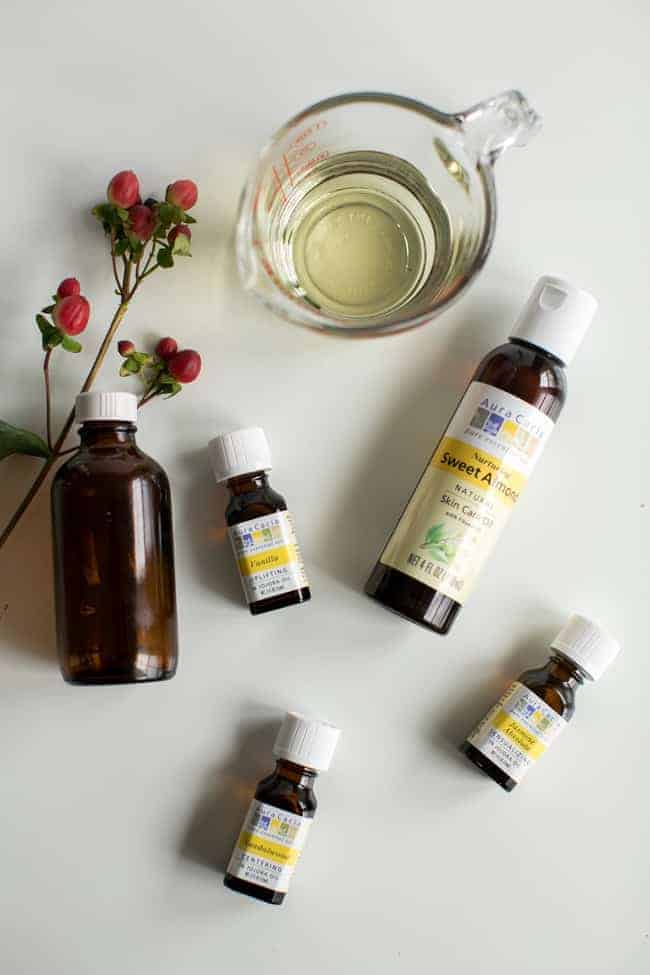
1 ounce (roughly 2 tablespoons) of carrier oil, such as sweet almond, apricot kernel, sesame seed, and grapeseed oil.
15-30 drops of essential oils (See below for specific blends. Choose oils that will complement the goals of your massage, and read all safety information before using.)
How To Make Massage Oil

Step 1 | Combine carrier oil + essential oil
I find it’s easier to measure out the carrier oil in a separate container, like a measuring cup. Then slowly add in the appropriate essential oils.
Step 2 | Bottle + label
Pour the massage oil mixture into a dark bottle, and shake well to combine.
Don’t forget to label your creation! You think you’ll never forget, but trust me, it’s harder to remember than you think!
Step 3 | Shake before using
Shake well before each use. Pour about 1 teaspoon into your hands and gently massage into skin. This recipe can be doubled or tripled for a larger batch, just make sure to keep the same ratio of essential oil to carrier oil.
Best Essential Oils for Massage Oil
The best essential oils for homemade massage oil recipes depend on the desired effects, such as relaxation, stress relief, or invigoration. Here are some popular essential oils and their associated benefits that you can use to create your own massage oil blends:

- Lavender: Relaxation, stress relief, calming.
- Peppermint: Invigorating, cooling, muscle tension relief.
- Eucalyptus: Respiratory support, muscle relaxation, refreshing.
- Chamomile: Calming, soothing, anti-inflammatory.
- Ylang-Ylang: Sensual, mood-enhancing, relaxation.
- Clary Sage: Relaxation, stress relief, hormone balance.
- Geranium: Balancing, uplifting, skin nourishment.
- Frankincense: Grounding, relaxation, skin rejuvenation.
- Ginger: Warming, muscle relaxation, circulation.
10 Ways To Make Homemade Massage Oils
It’s easy to make your own massage oils. My dilemma is always how and when to use them! It’s not like there’s a folding table just sitting around the house, much less an extra 60 minutes and a masseuse at my beck and call.
Good news: we’ve got a lot of different massage ideas for you.
Need help studying? Try a head massage.
Can’t sleep? Foot massage is the way to go.
Entering ‘mature’ skin territory? A face massage can tone loose skin.
Experiment with creating your own unique blends by combining different essential oils based on your preferences and desired effects.
1. Romantic Massage Oil

Love Potion Massage Oil: Add these essential oils to the base recipe above. Use ½ to 1 teaspoon to massage your partner.
Or create a sensual blend using ylang-ylang, jasmine, and sandalwood essential oils for a romantic and intimate massage experience.
2. Headache Relief

In the Zone Head Massage: A head massage is my very favorite thing. It’s so soothing that I could have my kids brush and play with my hair for hours! It does wonders for tension, and this essential oil blend will keep you focused and alert.
Add the essential oils to the base recipe above. Massage ½ teaspoon into temples and at the base of the neck to invigorate and enhance concentration.
3. Relaxation Massage

Relaxing Hand Massage: Give your hardworking hands a little TLC with this blend that will nourish your skin and promote stress relief.
4. Skin Nourishment
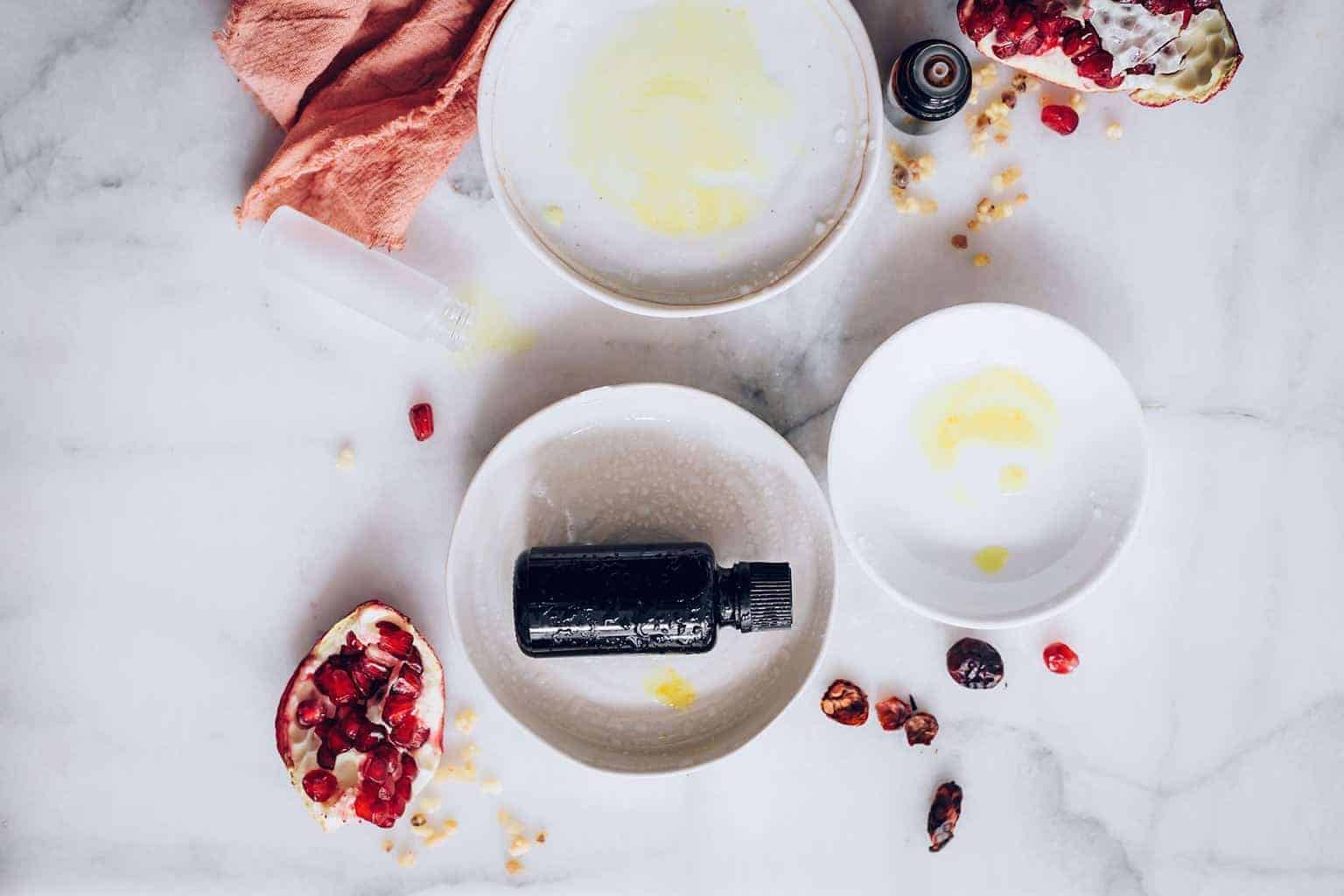
Face massage: Use a carrier oil like sweet almond or jojoba oil with a few drops of vitamin E for a nourishing massage oil that promotes healthy skin. Add a short facial massage to your nightly skincare ritual, and your face will thank you.
Add these essential oils to 1 ounce of carrier oil, like jojoba or rosehip, and shake well. After washing your face, apply a few drops of this massage oil to your fingertips. Gently massage into your skin with small circles, starting at the chin and working upward.
5. Energizing Massage

Use citrus essential oils like lemon, orange, or grapefruit for an invigorating and uplifting massage oil to boost energy levels.
Activating Leg Massage: Stimulate the lymphatic system with a massage in combination with dry brushing.
Add these oils to 1 ounce of your carrier oil and mix well. Massage into skin with upward circular movements, focusing on areas with cellulite. This oil can be applied before or after dry brushing.
6. Mood Upliftment
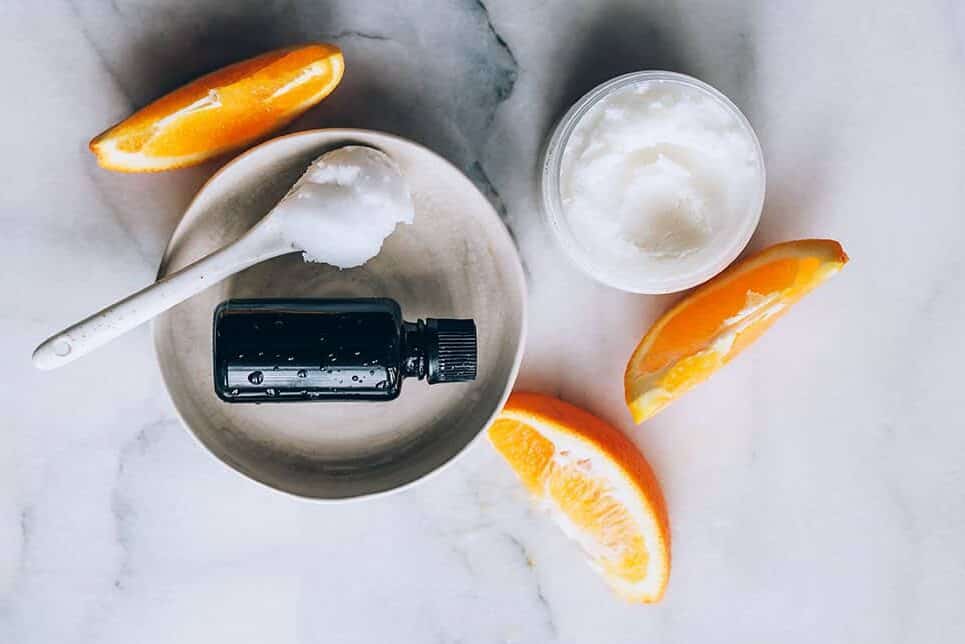
Mix bergamot, orange, and sandalwood essential oils for a mood-enhancing massage oil that can help lift spirits and reduce feelings of stress.
Blissed Out Massage Oil: Massaging the body with the Blissed Out oil gets the blood and lymph moving.
Combine the oils in a dark-colored bottle. Shake well before each use.
7. Post-Workout Massage
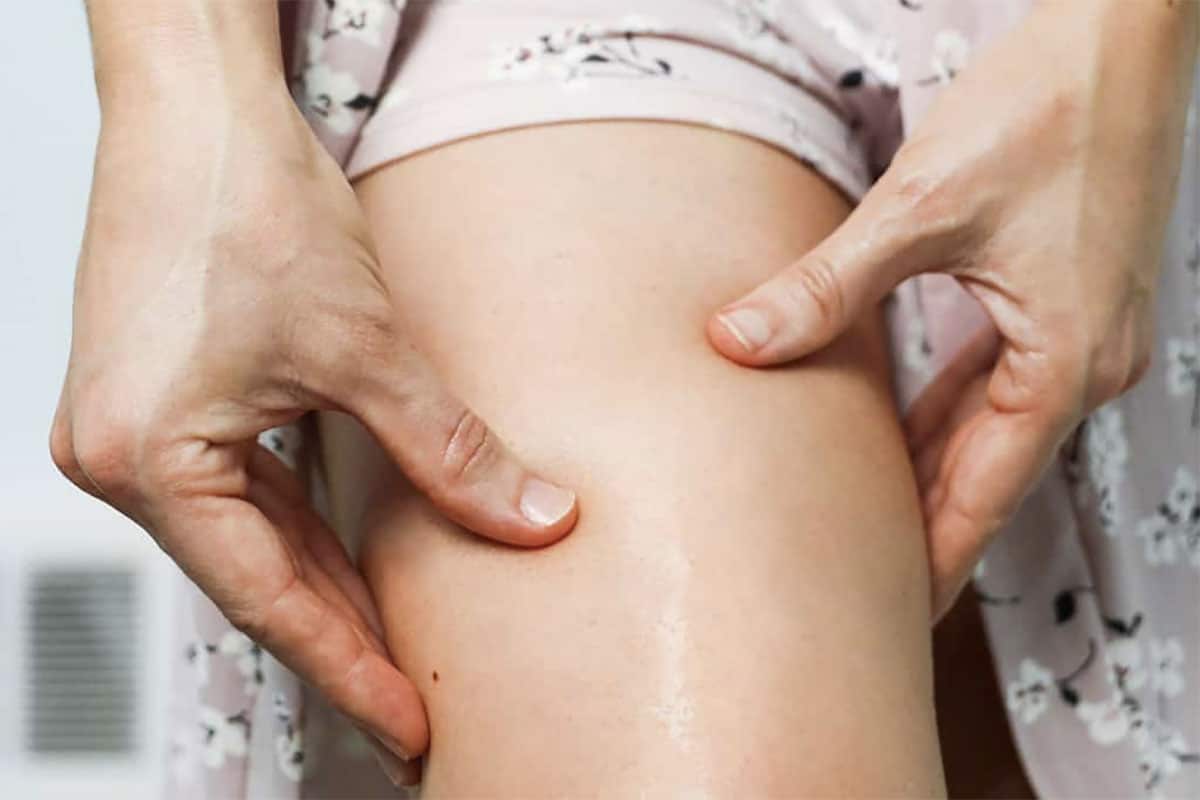
Combine essential oils like peppermint, eucalyptus, tea tree, and ginger essential oils to alleviate muscle tension and soreness. This cooling and soothing massage oil aids in muscle recovery after a workout.
- 6 drops peppermint essential oil
- 6 drops tea tree essential oil
- 10 drops lavender essential oil
Combine essential oils and carrier oils in a dark-colored bottle. Warm oil in your hands then apply to sore areas.
8. Anti-Inflammatory Massage
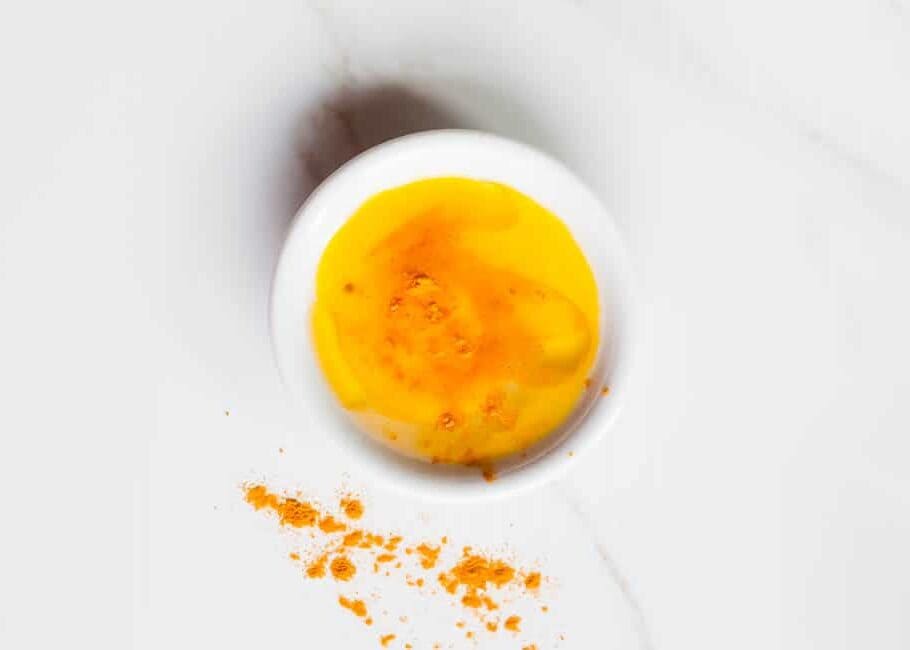
Turmeric is probably most well-known as an anti-inflammatory powerhouse—inside and out. In fact, the reason most people use turmeric supplements is to help with inflammation and pain. The good news is that the essential oil possesses anti-inflammatory properties as well!
Although human studies are lacking, one animal study found that turmeric essential oil showed significant antioxidant and anti-inflammatory activity [source]. In fact, turmeric essential oil is frequently used in blends formulated for aches and pains caused by inflammatory conditions.
More options:
- Combine chamomile, lavender, and ginger essential oils for a massage oil with anti-inflammatory properties, suitable for soothing inflamed areas.
- Blend eucalyptus, rosemary, and marjoram essential oils to create a massage oil that may help alleviate joint pain and stiffness.
9. Skin Toning Massage
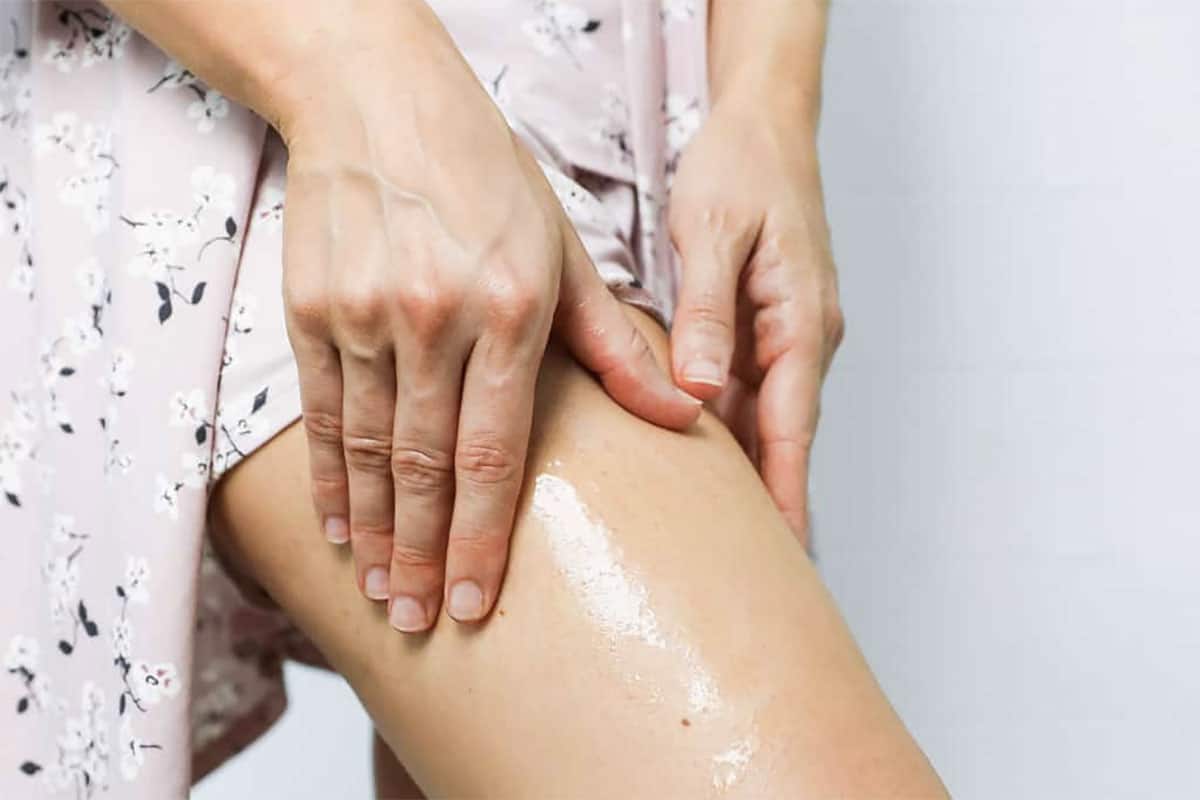
Creating a massage oil for cellulite involves using essential oils that are believed to have properties that may help improve skin tone and circulation. Combine juniper berry, grapefruit, and cypress to help stimulate circulation, tone skin, and reduce fluid retention.
- 2 tablespoon jojoba oil
- 2 tablespoon grapeseed oil
- 5 drops juniper berry essential oil
- 5 drops grapefruit essential oil
- 5 drops cypress essential oil
- 3 drops rosemary essential oil
- 3 drops lemon essential oil
Mix essential oils with 4 tablespoon of carrier oil. Pour a small amount into the hands and massage into areas with cellulite. You can also try this massage with honey.
10. Can’t Sleep Massage
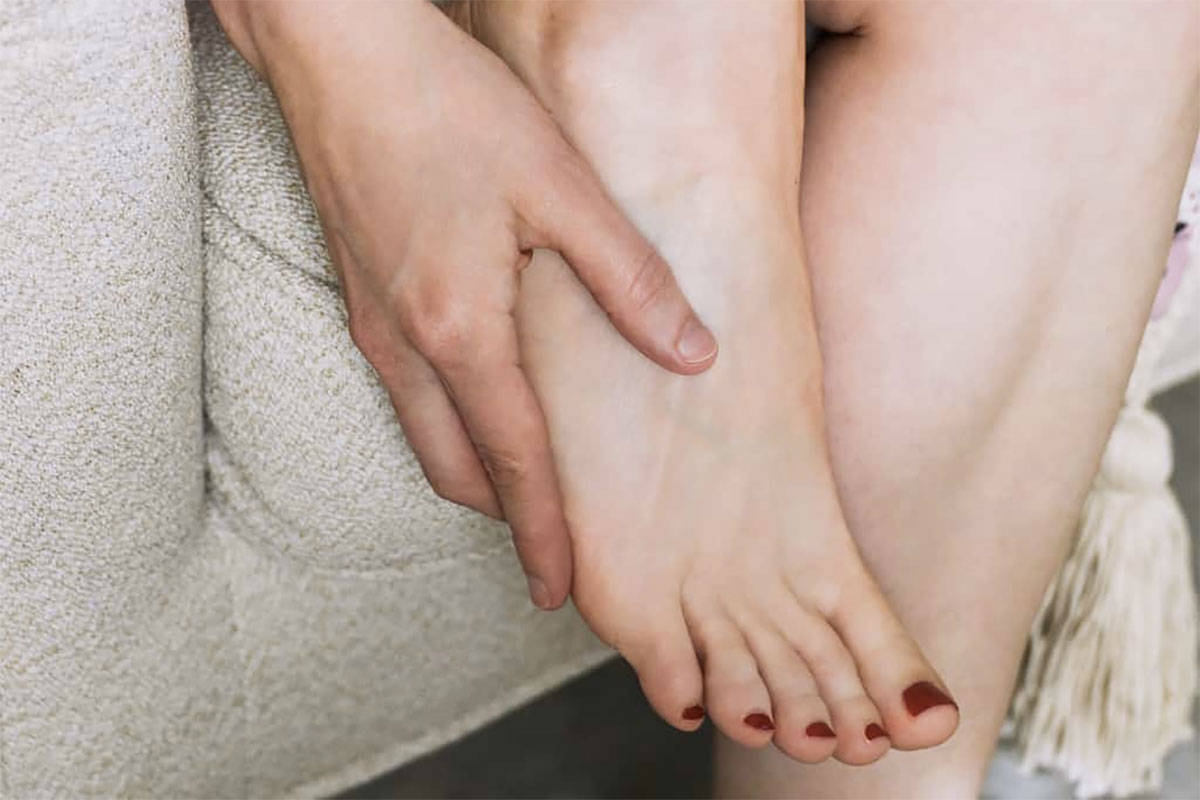
Calming Nighttime Foot Massage: I’ve talked about the relaxing magic of nightly foot massages. If an herb-infused balm is too much work, try this massage oil that takes less than a minute to make (for real).
Mix together with 1 ounce of base oil. Pour a small amount into the hands and massage into the feet.
Basic Massage Techniques:
Start with Effleurage: Begin with long, smooth strokes using the palms of your hands. This helps to warm up the muscles and relax the body.
Kneading: Use your fingers and thumbs to knead muscles gently. Apply pressure in a circular motion, especially on areas with tension, like the shoulders and neck.
Petrissage: Lift and squeeze muscles with a gentle rolling or kneading motion. This helps to release tension in the deeper layers of muscle tissue.
Friction: Create warmth by rubbing your hands together and then apply pressure with your palms in a circular motion. Focus on areas with knots or tightness.
Tapotement: Lightly tap or drum your fingers on the back, shoulders, or legs. This technique is invigorating and can stimulate circulation.
Targeted Areas:
Neck and Shoulders: Gently massage the neck with upward strokes, then move to the shoulders. Use kneading and circular motions to release tension.
Back: Work your way down the spine with long, sweeping strokes. Apply more pressure with kneading on areas that feel tense.
Hands and Feet: Massage fingers and palms, and gently stretch each finger. For the feet, use your thumbs to apply pressure in circular motions on the soles.
FAQs
Sure! Double and triple any of the above recipes and store in the refrigerator when not in use to keep the oils from going rancid.
The short answer is no—at least not in these dilutions. Check with your doctor before ingesting any essential oil.
If you’re not careful, massage oil can leave dark-looking spots on your bedding. I recommend laying down a towel or washable blanket to protect your nice sheets and massaging a small amount of oil directly into the skin in order to prevent drips. If you do happen to get oil on your sheets, pre-treat them with stain remover or dish soap and immediately wash them.
No, not if you use non-comedogenic carrier oils such as jojoba, almond, and apricot seed. It may even help clear up body acne by dissolving dirt and oil in pores and rinsing away impurities.
Technically, homemade massage oil should last a year or more (it’s just oil, after all). But I find that oils have a tendency to break down after a while, which can affect the smell. To keep your oil as fresh as possible, store it in the refrigerator, and try to use it within 6 months.
I wouldn’t recommend using these oils on babies. Older children may benefit, but it’s best to thoroughly research the oils beforehand (here’s a good list of kid-friendly oils) and to dilute them heavily.
This post was medically reviewed by Dr. Holly Smith, a board-certified physician in nephrology and internal medicine with a background in nutrition. Learn more about Hello Glow’s medical review board here. As always, this is not personal medical advice, and we recommend that you talk with your doctor.
Looking for more ways to take care of yourself and your body? Try some of these ideas:

